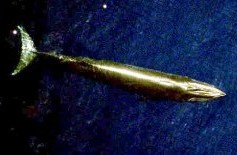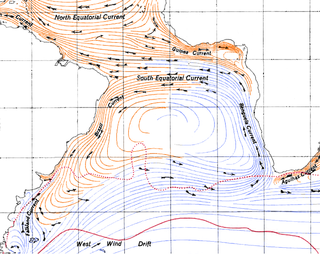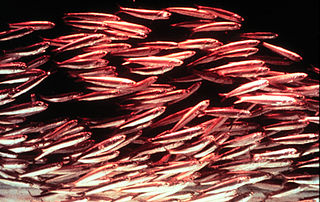
Bryde's whale, or the Bryde's whale complex, putatively comprises three species of rorqual and maybe four. The "complex" means the number and classification remains unclear because of a lack of definitive information and research. The common Bryde's whale is a larger form that occurs worldwide in warm temperate and tropical waters, and the Sittang or Eden's whale is a smaller form that may be restricted to the Indo-Pacific. Also, a smaller, coastal form of B. brydei is found off southern Africa, and perhaps another form in the Indo-Pacific differs in skull morphology, tentatively referred to as the Indo-Pacific Bryde's whale. The recently described Omura's whale, was formerly thought to be a pygmy form of Bryde's, but is now recognized as a distinct species. Rice's whale, which makes its home solely in the Gulf of Mexico, was once considered a distinct population of Bryde's whale, but in 2021 it was described as a separate species.

The Benguela Current is the broad, northward flowing ocean current that forms the eastern portion of the South Atlantic Ocean gyre. The current extends from roughly Cape Point in the south, to the position of the Angola-Benguela front in the north, at around 16°S. The current is driven by the prevailing south easterly trade winds. Inshore of the Benguela Current proper, the south easterly winds drive coastal upwelling, forming the Benguela Upwelling System. The cold, nutrient rich waters that upwell from around 200–300 m (656–984 ft) depth in turn fuel high rates of phytoplankton growth, and sustain the productive Benguela ecosystem.

The Peruvian anchoveta is a species of fish of the anchovy family, Engraulidae, from the Southeast Pacific Ocean. It has yielded greater catches than any other single wild fish species in the world, with annual harvests varying between 3.14 and 8.32 million tonnes throughout the 2010s.

Jansson's temptation is a traditional Swedish casserole made of potatoes, onions, pickled sprats, bread crumbs and cream. It is commonly included in a Swedish julbord, and the Easter påskbuffé, which is lighter than a traditional julbord. The dish is also common in Finland where it is known as janssoninkiusaus.

Algoa Bay is a maritime bay in the Eastern Cape, South Africa. It is located in the east coast, 683 kilometres (424 mi) east of the Cape of Good Hope.

Engraulis is a genus of anchovies. It currently contains nine species.

The Australian anchovy, Engraulis australis, is a species of anchovy of the family Engraulidae, found off south-east Australia, and around New Zealand.

The Cape cormorant or Cape shag is a bird endemic to the southwestern coasts of Africa.
The Argentine anchoita or Argentine anchovy is an anchovy of the genus Engraulis, found in and around waters of Argentina, Uruguay and southern Brazil.

Myeolchi-jeot (멸치젓) or salted anchovies is a variety of jeotgal, made by salting and fermenting anchovies. Along with saeu-jeot, it is one of the most commonly consumed jeotgal in Korean cuisine. In mainland Korea, myeolchi-jeot is primarily used to make kimchi, while in Jeju Island, meljeot is also used as a dipping sauce. The Chuja Islands, located between South Jeolla and Jeju, are famous for producing the highest quality myeolchi-jeot.

The European anchovy is a forage fish somewhat related to the herring. It is a type of anchovy; anchovies are placed in the family Engraulidae. It lives off the coasts of Europe and Africa, including in the Mediterranean Sea, the Black Sea, and the Sea of Azov. It is fished by humans throughout much of its range.

An anchovy is a small, common forage fish of the family Engraulidae. Most species are found in marine waters, but several will enter brackish water, and some in South America are restricted to fresh water.
Sardinella brasiliensis, is a species of ray-finned fish in the genus Sardinella. S. brasilensis are extremely hard to distinguish from Sardinella aurita and are combined in most studies and catch estimates. They spawn in coastal areas during late spring and summer. The most dense spawning periods are in December and January. From 1973 to 1990 the catch in Venezuela was down from 228000 tons to 31000 tons. These fish are present in the Western Atlantic (including the Gulf of Mexico, Caribbean, West Indies all the way down to Brazil

The European pilchard is a species of ray-finned fish in the monotypic genus Sardina. The young of the species are among the many fish that are sometimes called sardines. This common species is found in the northeast Atlantic, the Mediterranean, and the Black Sea at depths of 10–100 m (33–328 ft). It reaches up to 27.5 cm (10.8 in) in length and mostly feeds on planktonic crustaceans. This schooling species is a batch spawner where each female lays 50,000–60,000 eggs.
Tetragenococcus halophilus is a halophilic lactic acid bacterium active in the fermentation processes of soy sauce, miso, fish sauce and salted anchovies.
The stable ocean hypothesis (SOH) is one of several hypotheses within larval fish ecology that attempt to explain recruitment variability. The SOH is the notion that favorable and somewhat stable physical and biological ocean conditions, such as the flow of currents and food availability, are important to the survival of young fish larvae and their future recruitment. In the presence of stable ocean conditions, concentrations of prey form in stratified ocean layers; more specifically, stable ocean conditions refer to “calm periods in upwelling ecosystems ” that cause the water column to become vertically stratified. The concept is that these strata concentrate both fish larvae and plankton, which results an increase of the fish larvae feeding because of the density-dependent increase in predator-prey interactions. Lasker is attributed with constructing this hypothesis in the late 1970s by building on previous larval fish research and conducting his own experiments. He based the SOH on case studies of clupeid population fluctuations and larval experimentation.

The Japanese anchovy is a schooling fish of the family Engraulidae. It is common in the Pacific Ocean south from the Sea of Okhotsk, widespread in the Sea of Japan, Yellow Sea, and East China Sea, and near the coasts of Japan. They live up to 2–3 years, similar to European anchovy. They spawn from Taiwan to southern Sakhalin.

The Cape horse mackerel is a mackerel-like species in the family Carangidae. It is a pelagic species of the south eastern Atlantic Ocean which is a target of fisheries, mainly as bycatch.

Anchovies are small, common saltwater forage fish in the family Engraulidae that are used as human food and fish bait. There are 144 species in 17 genera found in the Atlantic, Indian, and Pacific Oceans. Anchovies are usually classified as oily fish. They are small, green fish with blue reflections due to a silver longitudinal stripe that runs from the base of the caudal fin. They range from 2 centimetres (0.79 in) to 40 centimetres (16 in) in adult length, and the body shape is variable, with more slender fish in northern populations.

The Californian anchovy or northern anchovy is a species of anchovy found in the Pacific Ocean, ranging from Mexico to British Columbia.














